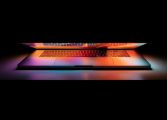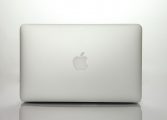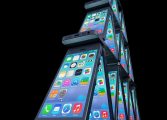Apple USB-C: A Comprehensive Guide to the Future of Connectivity

Introduction
In our ever-advancing technological world, Apple has been at the forefront of innovation, continuously striving to enhance user experience. One significant development they have introduced is the Apple USB-C, a versatile and powerful connector designed to revolutionize the way we connect and transfer data. In this article, we will provide a thorough overview of Apple USB-C, explore its different types, delve into its popularity, examine quantitative measurements, discuss the variations among Apple USB-C models, and review the historical advantages and disadvantages associated with this technology.
I. Overview of Apple USB-C

Apple USB-C is a cutting-edge connectivity standard that allows for faster data transfer, enhanced power delivery, and versatile compatibility across a wide range of devices. Unlike its predecessors, Apple USB-C features a reversible design, eliminating the inconvenience of trying to connect the cable in a specific orientation. This technology is quickly becoming the new industry standard due to its ability to connect various devices using a single cable type.
II. Presentation of Apple USB-C
1. Types of Apple USB-C
There are several types of Apple USB-C connectors available, each catering to different needs and devices. The most common types include USB-C to USB-A, USB-C to HDMI, USB-C to Ethernet, and USB-C to VGA. These connectors facilitate connections between MacBooks, iPhones, iPads, and other devices, allowing seamless data transfer, video output, and internet connectivity.
2. Popularity and User Adoption
Since its introduction in 2015, Apple USB-C has gained immense popularity among tech enthusiasts and professionals alike. Its ability to connect multiple devices, charge quickly, and transfer data at lightning speed has won over a significant portion of the market. As a result, we’ve witnessed an increased adoption of Apple USB-C both by Apple device users and other manufacturers who recognize its potential.
III. Quantitative Measurements of Apple USB-C
When it comes to performance, Apple USB-C offers impressive quantitative measurements. For instance, it supports data transfer speeds of up to 10 Gbps, ensuring swift file transfers and efficient backups. Additionally, Apple USB-C can deliver up to 100 watts of power, enabling fast charging capabilities for devices. The advanced Thunderbolt 3 technology embedded within certain Apple USB-C models further enhances data transfer rates, reaching an impressive 40 Gbps.
IV. Variations and Distinctions among Apple USB-C Models
Although Apple USB-C connectors share similar functionality, there are variations among different models worth considering. For instance, the latest MacBook Pro models feature Thunderbolt 3 ports, which provide faster data transfer speeds and the ability to connect multiple peripherals. On the other hand, older MacBook models may only support USB-C 3.1 Gen 1, which offers slower data transfer rates.
V. Historical Advantages and Disadvantages of Apple USB-C
To understand the evolution of Apple USB-C, it is essential to review the forerunners of this technology. Previously, Apple utilized different connectors like the MagSafe and Thunderbolt 2, each with its own advantages and drawbacks. While MagSafe brought hassle-free magnetic charging, it lacked data transfer capabilities. Thunderbolt 2 provided faster data transfer speeds but had limited compatibility. Apple USB-C successfully combines the best features of its predecessors, offering a versatile connector that can handle both power delivery and data transfer.
Conclusion
Apple USB-C has undoubtedly revolutionized how we connect and transfer data. Its impeccable speed, versatility, and compatibility make it an indispensable feature in modern tech devices. As we continue to witness advancements in technology, Apple USB-C remains at the forefront, setting the standard for seamless connectivity. Whether it be for charging, data transfer, or video output, Apple USB-C provides the necessary tools to enhance your digital experience.
















































